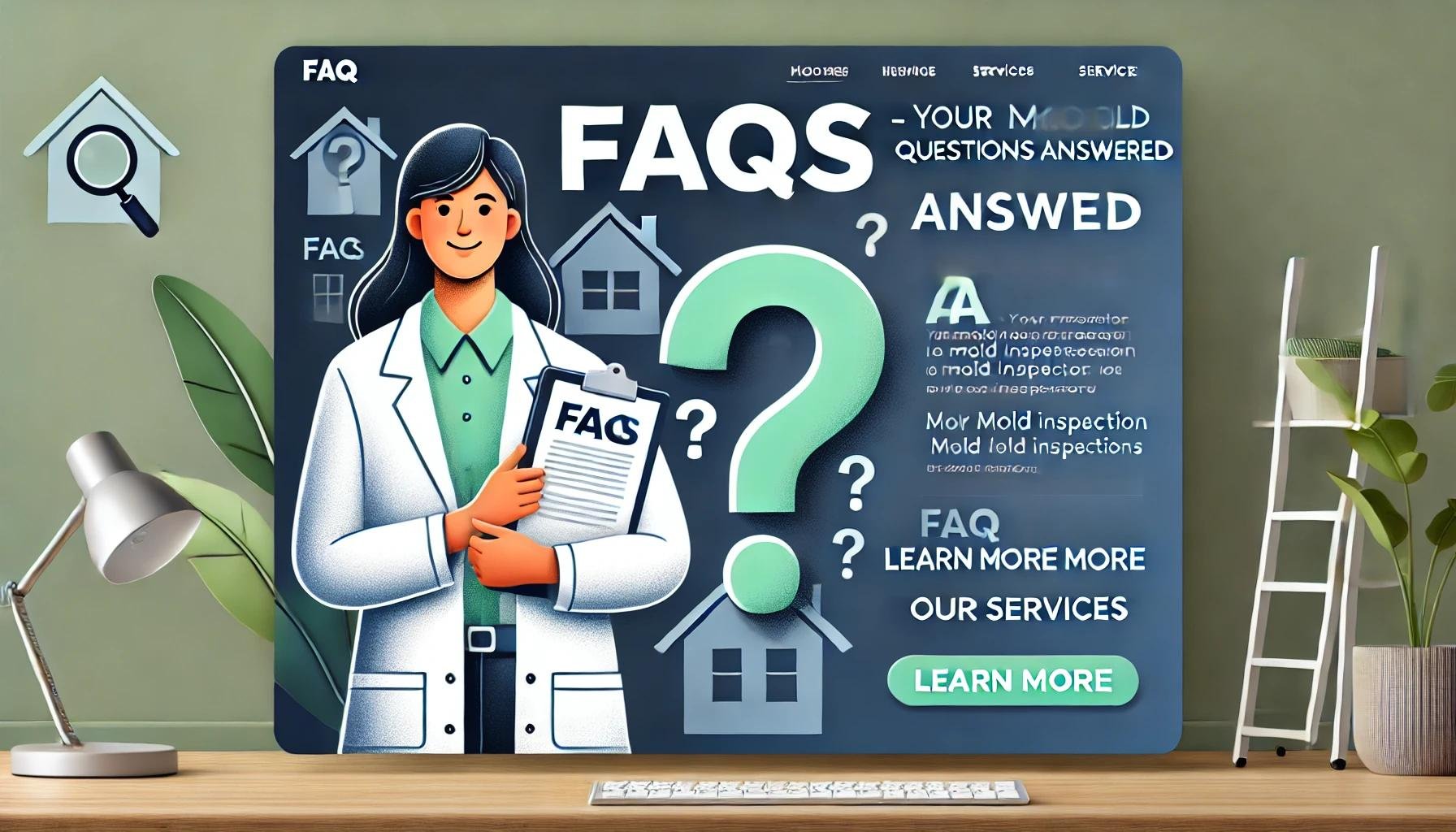Expert Mold Inspection & Testing FAQs answered
-
Mold is a type of fungus that grows in damp environments, feeding on organic materials like wood, drywall, and carpet. It’s dangerous because it releases tiny spores into the air, which can cause health problems, including respiratory issues, allergies, and skin irritation. Some types, like black mold (Stachybotrys chartarum), produce toxins that can lead to severe health conditions if left untreated.
-
Common signs include:
• A persistent musty odor.
• Visible discoloration on walls, ceilings, or floors.
• Peeling or bubbling paint.
• Increased allergy symptoms, such as sneezing or coughing.
• Damp or water-damaged areas in your property
-
Exposure to mold can cause:
• Respiratory problems (e.g., asthma, wheezing).
• Nasal and sinus congestion.
• Skin rashes or irritation.
• Eye and throat irritation.
• Severe symptoms for individuals with weakened immune systems or mold allergies
-
A mold inspection includes a thorough visual assessment by a certified inspector, moisture testing, and thermal imaging to detect hidden mold. Air and surface samples are collected and sent to a laboratory for analysis. The results are used to create a detailed report, including remediation recommendations if needed.
-
A mold inspection involves a visual check and tools like thermal imaging to detect areas where mold might grow. Mold testing involves collecting samples (air or surface) to confirm the presence and type of mold. Testing provides a clearer picture of air quality and mold severity.
-
No, we focus solely on inspections and testing. This ensures we remain unbiased and provide conflict-free advice. We provide a remediation protocol, guiding you on what steps to take to resolve the issue.
-
A typical inspection takes 1 hour, depending on the size and condition of the property. For larger spaces or extensive issues, it may take longer.
-
Yes. After the inspection, you will receive a detailed report outlining:
• Areas of concern.
• Mold types (if testing was done).
• Recommendations for remediation or preventative measures.
-
We use advanced tools like:
• Moisture meters to detect hidden dampness.
• Thermal imaging cameras to locate temperature differences that may indicate mold.
• Air pumps to collect air samples.
• Swabs or tape lifts for surface sampling.
-
Thermal imaging detects temperature differences on surfaces, identifying potential moisture problems behind walls or ceilings. These areas are often where mold thrives.
-
Our testing is highly accurate. Samples are analyzed in accredited labs using advanced methods to identify mold species and concentrations.
-
Yes, air quality testing is a key part of our process. We analyze indoor air samples to measure mold spore levels and compare them to outdoor levels, which helps determine whether there’s an abnormal mold presence.
-
The cost depends on the size and complexity of your property. Typically, inspections range from $300 to $700. Contact us for a precise quote based on your needs.
-
Yes, we provide free phone consultations to discuss your concerns and determine whether an inspection is necessary. However, the inspection and testing are paid services.
-
We accept cash, credit cards, and online payments for your convenience.
-
We serve Chicago and the Chicagoland area, including surrounding suburbs. Contact us to confirm if we operate in your location.
-
Yes, we provide mold inspection and testing services for both residential homes and commercial buildings.
-
• Fix water leaks and ensure proper drainage.
• Keep indoor humidity levels below 50%.
• Ventilate bathrooms, kitchens, and other moisture-prone areas.
• Regularly clean and inspect areas prone to dampness.
-
Schedule a post-remediation inspection. We’ll perform clearance testing to ensure the remediation was successful and your property is mold-free.
-
Yes, we offer clearance testing to confirm that all mold has been properly removed and air quality is back to normal.

